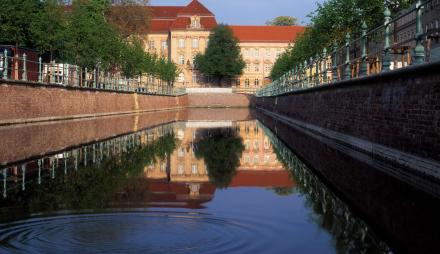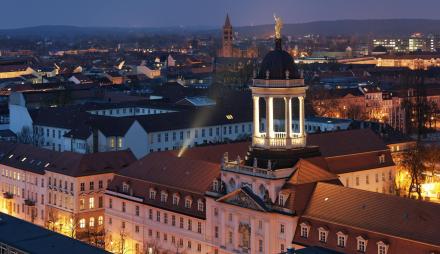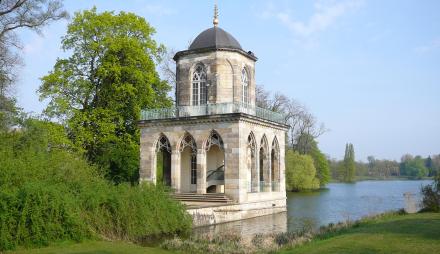
The Gutspark Groß Glienicke (Gross Glienicke Manor Park) is a landscape park originally belonging to the Groß Glienicke manor, located at the northern end of Groß Glienicker See. The manor was owned by various noble families from the Brandenburg region. After numerous changes in ownership between 1375 and 1927, the manor house was finally destroyed by fire in the autumn of 1945.
The design of the park was based on the topographical features: Following the glacial meltwater channel in which the Groß Glienicker See is situated, a large pond with an island was created, while the western and eastern parts of the park are slightly elevated.
Until the post-war period, the park was fully intact. However, the border division after 1945 split the estate into "West" and "East" sections. The creation of the "Death Strip" along the border after 1961 led to partial destruction of the park.
Today, the park is highly valued for its collection of numerous trees from its original planting period. Its significance is further supported by the presence of key features, such as a decorative building, a fountain, a burial site, remnants of bridge structures, the verifiable park pathway system, the pond with an island, the Potsdam Gate, the former manor garden, and a scythe barracks. The park has historical garden significance, as it still reflects the representative aspirations of the bourgeois families in the countryside and stands as evidence of high-quality garden design from the second half of the 19th century.
The long-lasting influence of the von Ribbeck family from 1572 to 1788, as well as the last manor-owning family, the von Wollank family, gives the former manor special regional and local historical importance.
Address
Groß Glienicke
14476 Potsdam
Germany



